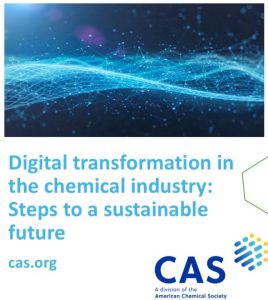World Environment Day (WED), celebrated annually on June 5, has become the largest global platform for environmental outreach. It is observed in over 150 countries and is a powerful reminder of the need to protect and preserve our planet. But behind this worldwide movement lies a story deeply rooted in international concern for the human environment.
From Stockholm to a Global Stage
The journey began in 1972, at the first major international conference focused solely on environmental issues — the United Nations Conference on the Human Environment, held in Stockholm, Sweden, from June 5 to June 16. This landmark event, also known as the Stockholm Conference, marked a turning point in how the global community perceived environmental concerns. It brought together representatives from 122 countries, including India’s then-Prime Minister Indira Gandhi, who became one of the first world leaders to emphasize the connection between poverty and environmental degradation.
The Stockholm Conference was convened to find a common approach to addressing the rapid deterioration of the natural environment due to industrialization, urbanization, and population growth. Its central message was clear — the world needed to act collectively to protect the environment while ensuring sustainable development for future generations. As a result of this pivotal conference, the United Nations General Assembly passed a resolution on December 15, 1972, officially designating June 5 as World Environment Day.
In the same resolution, the UN also established the United Nations Environment Programme (UNEP), headquartered in Nairobi, Kenya. UNEP was created to provide leadership, promote partnerships, and coordinate environmental efforts at the international level. Since then, UNEP has played a crucial role in organizing World Environment Day celebrations and setting annual themes to spotlight urgent environmental issues.
Themes That Reflect Evolving Priorities and that Resonate with the Chemical Industry
Each year, WED adopts a new theme to spotlight urgent environmental issues — from air and water pollution to climate change and biodiversity loss. These themes often align closely with critical areas of impact or opportunity for the chemical industry.
Over the decades, several WED themes have overlapped closely with issues rooted in the chemical industry:
- WED 2011: “Forests: Nature at Your Service” — Highlighted deforestation driven by agrochemical use and industrial pollution.
- WED 2018: “Beat Plastic Pollution” — Urged action against plastic waste, largely produced by petrochemical sectors.
- WED 2021: “Ecosystem Restoration” — Called for reduced use of hazardous chemicals and better waste management practices to restore natural ecosystems.
- WED 2025: “Putting an End to Plastic Pollution” — Returns to this critical theme with increased urgency, emphasizing the damage caused by non-recyclable plastics, microplastics, and toxic degradation products.
Each of these themes intersects with key operations and challenges in chemical production, from raw material sourcing and emissions to product design and end-of-life disposal. In response, the industry must evolve toward green chemistry, circular material flows, and environmentally benign alternatives.
A Call for Industry Accountability and Innovation
The chemical industry’s environmental footprint is both vast and complex, ranging from greenhouse gas emissions and hazardous waste to microplastic contamination and water pollution. But with this complexity also comes the capacity to drive significant change.
World Environment Day challenges chemical companies to:
- Rethink feedstocks: Transitioning to renewable, biodegradable, or recycled materials.
- Reduce emissions: Embracing carbon capture, low-energy synthesis pathways, and electrification of processes.
- Reformulate products: Designing chemicals that degrade safely, minimize toxicity, and perform sustainably.
- Reimagine systems: Scaling innovations in waste recovery, solvent reuse, and sustainable packaging.
As stakeholders across academia, industry, and governance come together on June 5, WED acts as a global checkpoint for environmental accountability and a launchpad for cross-sector collaboration. Chemical journals, research institutes, and manufacturers alike have a role in translating environmental policy into practical, science-driven solutions.
Several global chemical companies have already aligned with the goals of previous WED campaigns by investing in closed-loop systems, reducing Persistent Organic Pollutants (POPs), and reformulating products to eliminate Endocrine Disrupting Chemicals (EDCs). However, the pace of progress must accelerate.
From Global Movements to Sector-Specific Action
World Environment Day has never been about awareness alone. It has catalysed grassroots movements, government policy, and corporate commitments across decades. Each year, it unites over 150 countries in a renewed commitment to creating a healthier and more sustainable environment. For the chemical industry, participating in WED should not be superficial — it must reflect a year-round commitment to responsible production, ethical sourcing, and sustainable innovation.
The message from Stockholm in 1972 and Geneva in 1973 echoes louder than ever in 2025: “Only One Earth.” For an industry that shapes the materials, medicines, and technologies of modern life, this theme is both a warning and a challenge. The future of chemical science must be regenerative, not extractive, and World Environment Day is a timely reminder of that mission.

































